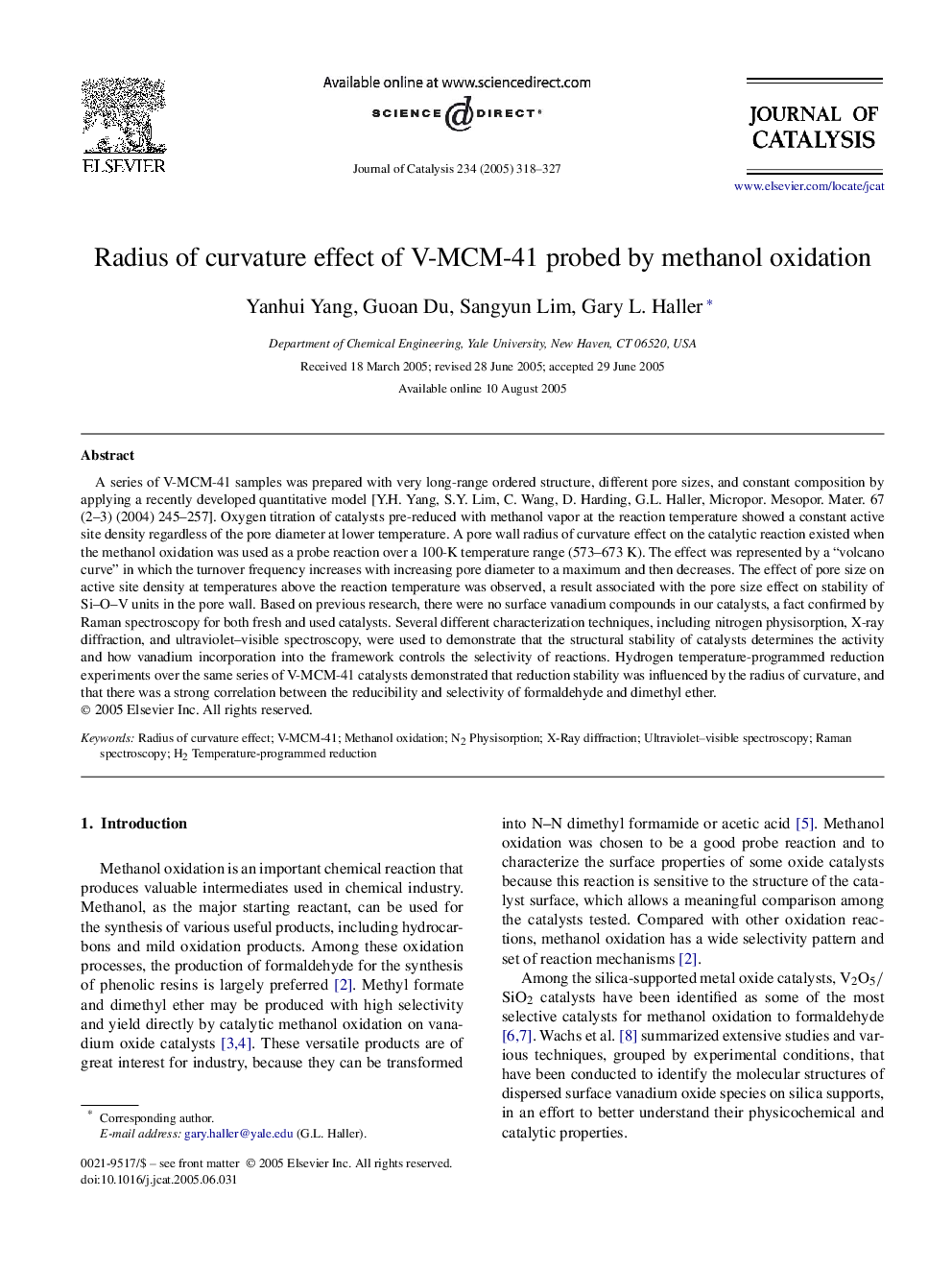| Article ID | Journal | Published Year | Pages | File Type |
|---|---|---|---|---|
| 10244663 | Journal of Catalysis | 2005 | 10 Pages |
Abstract
A series of V-MCM-41 samples was prepared with very long-range ordered structure, different pore sizes, and constant composition by applying a recently developed quantitative model [Y.H. Yang, S.Y. Lim, C. Wang, D. Harding, G.L. Haller, Micropor. Mesopor. Mater. 67 (2-3) (2004) 245-257]. Oxygen titration of catalysts pre-reduced with methanol vapor at the reaction temperature showed a constant active site density regardless of the pore diameter at lower temperature. A pore wall radius of curvature effect on the catalytic reaction existed when the methanol oxidation was used as a probe reaction over a 100-K temperature range (573-673 K). The effect was represented by a “volcano curve” in which the turnover frequency increases with increasing pore diameter to a maximum and then decreases. The effect of pore size on active site density at temperatures above the reaction temperature was observed, a result associated with the pore size effect on stability of SiOV units in the pore wall. Based on previous research, there were no surface vanadium compounds in our catalysts, a fact confirmed by Raman spectroscopy for both fresh and used catalysts. Several different characterization techniques, including nitrogen physisorption, X-ray diffraction, and ultraviolet-visible spectroscopy, were used to demonstrate that the structural stability of catalysts determines the activity and how vanadium incorporation into the framework controls the selectivity of reactions. Hydrogen temperature-programmed reduction experiments over the same series of V-MCM-41 catalysts demonstrated that reduction stability was influenced by the radius of curvature, and that there was a strong correlation between the reducibility and selectivity of formaldehyde and dimethyl ether.
Keywords
Related Topics
Physical Sciences and Engineering
Chemical Engineering
Catalysis
Authors
Yanhui Yang, Guoan Du, Sangyun Lim, Gary L. Haller,
